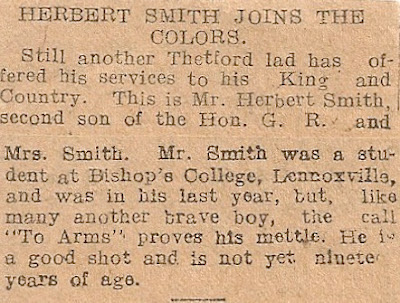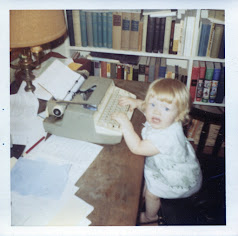Reference:
Jones, Thomas W. "Determining a Source's Publication Status." In Mastering Genealogical Documentation, 63-70. Arlington, VA: National Genealogical Society, 2017.
"Researchers determine a source's publication status because citations to published and unpublished sources differ greatly. Citing a publication as if it were unpublished, or vice versa, would mislead readers. The citation would fail to communicate." (1)
Publication status as it pertains to genealogical sources really has to do with current availability. Something that was not originally published may now be widely available online, like census records and something that was widely published originally may now be difficult to find with only rare copies available. A book may be self-published and even have an ISBN (International Standard Book Number), but if it was not made available for sale or other distribution, it is not considered published for our purposes.
Two things that I found interesting in the reading were the topics of online sources and hybrid sources.
Most online sources would be considered published, but some would not and it has nothing to do with the cost of access or paywalls as I originally thought. Anyone willing to spend the money can access the Quebec church records of the Drouin collection from the comfort of their own computer, but no amount of money will get you home access to some records on Family Search because they must be accessed from the Family History Library, a partner library or Family History Center. Published vs. unpublished.
The example of a hybrid source that spoke to me was the family Bible with handwritten birth, marriage, and death records. The Bible was published but the genealogical data inside was not. Both must be addressed, both sources are necessary to properly evaluate the information inside. The records of a family beginning in the 1800s contained in a Bible not published until the 1900s would be considered differently from records beginning in 1850 contained in a Bible that was published the same year or earlier. I have scans and copies of records from a Bible in my family, but I cannot properly evaluate them according to the Genealogical Proof Standard because I have only seen the Bible in person once and have never seen the publication information.
Here are a couple of other tricky examples from my own research:
The three-volume set of blue binders pictured above are a genealogy of one of my Swedish lines. It starts with Helje Larsson and Maria Ericsdotter, my supposed 5th great-grandparents and, on my line, comes down to my father and mother since it was finished shortly before my birth. There is nothing to indicate that this work was published.
The entire three volumes are typed as you see above (click the image for a larger view), there is no publication information. Still, I did some searching online before making a determination. Bertil Freidlitz, one of the authors, does have another genealogy that appears on WorldCat, but even that is only available through Family Search at the FHL, an affiliate or an FHC. I have to imagine that this work made it to several families descending from my 5th great-grandparents, but even that wouldn't necessarily make it published. I consider this work to be UNPUBLISHED and would cite it as follows:
(Thanks to Marceline Beem who reminded me in her post for this chapter to break the information down to answer these five questions and to Marceline and other panelists who had the idea of color-coding the citation elements for greater visual clarity.)
Who - Annie & Bertil Freidlitz
What - Kyrkebo-Släkten Släktbok for Ättlingar Till Helje Larsson och Maria Ericsdotter I Kyrkebo, N. Hestra [Kyrkebo Family Book for Descendants of Helje Larsson and Maria Ericsdotter from Kyrkebo, N. Hestra]
When - 1968
Where (in the source) - I: Andra grenen [Second branch] VI : 5-1
Where (is the source) - private collection of Anna C. Matthews
Annie & Bertil Freidlitz, Kyrkebo-Släkten Släktbok for Ättlingar Till Helje Larsson och Maria Ericsdotter I Kyrkebo, N. Hestra [Kyrkebo Family Book for Descendants of Helje Larsson and Maria Ericsdotter from Kyrkebo, N. Hestra], 1968; I: Andra grenen [Second branch] VI: 5-1. Privately held by Anna C Matthews [ADDRESS FOR PRIVATE USE,] Rockville Centre, NY, This book offers only a generic list of materials used, with no specific documentation for any piece of data.
Because this source is unpublished, we need to let the reader know where it was found. And also because of its unpublished status, the Wherein comes before the Whereis in the order of the elements in the citation as we learned in chapter four.
Another example from my bookshelf is The Vine and The Branches, a history of Minton, Quebec that includes local genealogies, among them a branch of my own family.
The narrow focus of the work and the publication year of 1989 made me question its current availability but a search of WorldCat brought surprising results.
While certainly not widely available, you can find this work at some well-known archives like Library and Archives Canada and even the Allen County Public Library here in the States, well known for its extensive genealogy department. So I would consider this to be a PUBLISHED work and cite it as follows:
Reg Conner, The Vine and the Branches (North Hatley, Quebec, 1989), 241
I did not include the publisher's name in the parentheses because I consider this book to be self-published and Reg Conner's information is already included.
If you feel so inclined, please let me know what you think of my classifications and citations. I need all the help I can get.
I would like to send thanks to Randy Seaver who included my last Gen Doc Study Group post in his "Best of the Geneablogs" post for November 19-25th and to DearMYRTLE who mentioned it during last week's study group.
Just remember, if you compare this to a workout video, I'm the one over to the side doing the low-impact version. The panel participants and of course, Dr. Jones and Elizabeth Shown Mills, have so much more experience and are doing the advanced workouts. You can find the hard-copy of Dr. Jones' book at NGS and the Kindle version at amazon.com. And you can register to watch the replay of the Chapter 6 study group here and continue the conversation in the Google+ community here.
(1) Thomas W. Jones, Mastering Genealogical Documentation (Arlington, VA, 2017), 63.




















